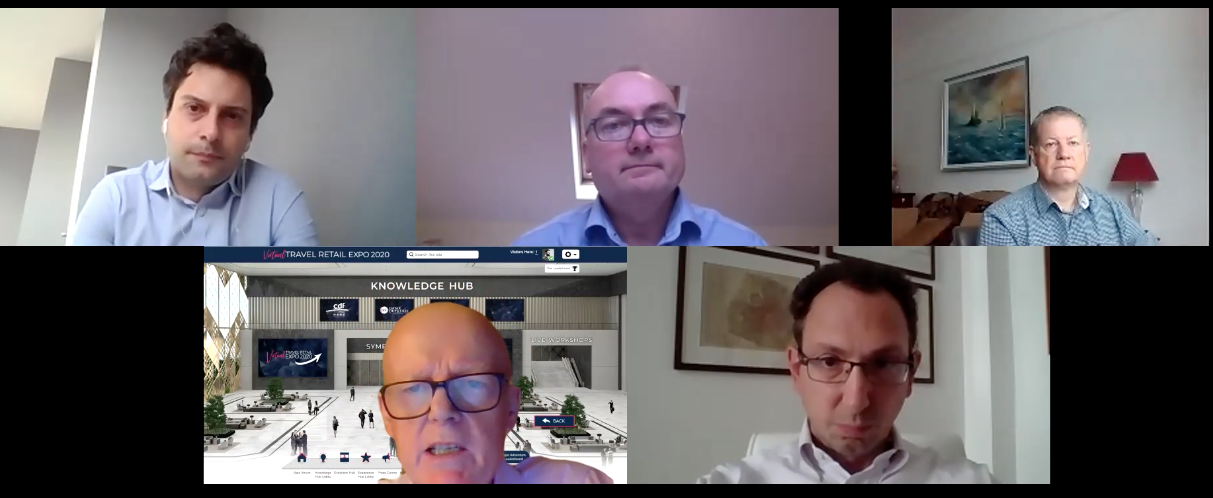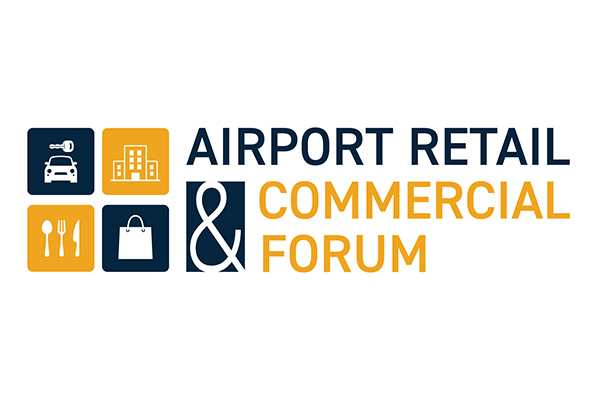 INTERNATIONAL. The latest in a series of highly successful Trinity Initiative webinars cast the spotlight on changing travelling consumer behaviour, the future of the concession model and how sector stakeholders should react during a harsh transitionary period caused by COVID-19. The Moodie Davitt Report in association with Bain & Company hosted two webinars on the theme ‘Fit for the future’ on Thursday.
INTERNATIONAL. The latest in a series of highly successful Trinity Initiative webinars cast the spotlight on changing travelling consumer behaviour, the future of the concession model and how sector stakeholders should react during a harsh transitionary period caused by COVID-19. The Moodie Davitt Report in association with Bain & Company hosted two webinars on the theme ‘Fit for the future’ on Thursday.
As reported, following the previous webinars Bain & Company and The Moodie Davitt Report have held several private discussions with a wide array of sector stakeholders in an effort to help evaluate the industry landscape of the future.
The latest webinars again featured Mauro Anastasi, a Partner with management consultancy Bain & Company Italy and Jack MacGowan, Director at Castlepole Consulting and former CEO of Irish state-owned Aer Rianta International. MacGowan works closely with Bain & Company. They were joined by UBS Head of European Transport Research Cristian Nedelcu, who examined airport retail from the perspective of investors looking at the space – and how the market is valuing the airport retail business.
Anastasi addressed the latest situation facing the industry, saying it would likely take until 2024 before travel retail reaches 2019 levels of business, adding that store profitability would also be challenged for the next three years (with variance by store, category, terminal and airport).
He noted that the customer mix and behaviour would change significantly over the next five years.


Among the predictions was that younger generations (Gen X and Y) would represent a far higher proportion of the travel and shopper base than today. From one third of travellers these will be roughly half by 2025, he noted.
Another factor is that sales influenced by online (from awareness to transaction) would rise sharply, and that the share of high spenders would moderate. “This group represents a strong force in our industry now, but that share will go down. This will affect revenues but also what we sell in every category and every store.”
In addition, China will retain much more of its luxury shopping at home. “Of the Chinese travelling spend we saw overseas in the last years, we believe half will be repatriated,” he said.

With the changing consumer base as a key influence, Anastasi raised several key questions for the industry in its thinking about the future.
“First, travel retail is fundamentally based on density. An airport with very few people is not profitable for anybody and is not attractive for the consumer. But we know we face less passengers and less revenues. So how do we reconcile this, and manage airport retail when we have fewer people? Is it time to exploit different categories. We know the penetration of passengers is low at around 20%, so 80% don’t buy. There could be options to improve.
“How can we improve airports’ and retailers’ ability to understand the consumer, and adapt quickly to their new demands? Much more can be done to launch and work on innovation through data-driven test and learning.
“Also we see the increased relevance of digital in the channel, not only with sales online but in how it impacts the lives of our consumers. How do defend against that as a threat but also leverage it for our own gain? Can we do more on dynamic pricing to fight against online pricing? Can we use data differently, improve CRM capabilities and also leverage the digital channels better? What is not clear is who will invest and own the digital platforms? Everyone thinks it’s important but it’s not clear how it will evolve. But there is a business case for those specialist digital players outside travel retail here and they will act soon, we think.”

Jack MacGowan explored the merits and realities of concession contracts compared to other models such management contracts and joint ventures.
He said: “The concession model, which worked effectively for the past 20 years, is being challenged by the scale and depth of the disruption today.”
“Many people will only have worked with concession contracts. The structure has created a lot of value over the past 20 years, more for the airports than the retailers. But it has relied upon both parties taking risk and in the case of retailers, it led to them believing they were indestructible, that they could always pay whatever level of rent they bid on, and airports understanding that the retailer would always be able to pay rent.
“Unfortunately, both of these assumptions have turned out to be wrong. We hoped for the last five months that this would be a short-lived disruption but now we need to accept that there will no sharp early recovery. So a fundamental overhaul of the business is needed and that will take four to five years.”
He added: “Instead of looking at staff furloughs or replacing MAG temporarily, we have to look at the sustainable cost base that each location can support for that time period. That means resizing the business for the low density travel retail period that we’ll have to manage ahead.
“Now more than ever airports need to look at the experience, from retail to F&B, and use that like never before to encourage demand. That is in the face of some big issues: vacant space, passenger dissatisfaction, unprofitable partners who may be unwilling to work with them. So they need a new incentive, not the old concession agreement. The profit pool will be smaller with more uncertainty around it. To handle this, some airports may want to go out and do it themselves.”

MacGowan noted varying ways in which airports could become more involved in managing their own retail under these new circumstances, from management contracts to a more relaxed concession deal to a longer deal JV with a retailer, assessing the pros and cons of each.
“Whatever happens, hoping things will get better is not sustainable. We have to take action. It will be years before we hit high density again. If we don’t bite the bullet we are prolonging the pain for everyone.”
 UBS’ Cristian Nedelcu spoke about the challenges facing the major European airports, with a focus on retail revenue and cash flows, plus the valuation of airports in the new global context.
UBS’ Cristian Nedelcu spoke about the challenges facing the major European airports, with a focus on retail revenue and cash flows, plus the valuation of airports in the new global context.
“Airports were quite fast in building liquidity and got financing at attractive rates. That got them into a favourable position where they could withstand quite low levels of traffic for 12-18 months.
“Some now have very high levels of debt based on normal traffic so they will have to restructure and be more careful about managing things going forward. One issue would be where we have a prolonged period of only 20% of normal traffic; then it would become much harder to raise debt.”
Other factors include increased competition among airports – leading to more attractive tariffs for airlines, for example. “Also, capex plans have been postponed, which is key for retail. One of the drivers for growth in retail revenues was the incremental airside capacity for retail and now we cannot rely on that.” Other drivers, he noted, include foreign exchange movements, concession rates, a favourable passenger mix (with many more Chinese) and refurbished space over time.
On forecasting cash flow from retail, the key fundamentals have changed sharply. UBS had previously forecast an upbeat picture for spend per passenger across the leading airport groups based on October 2019 figures. “The view was that concession rates would be flat or would increase, and that the mix would continue to be favourable but all that has changed,” said Nedelcu. “We see spend per pax falling 5-15% in the next couple of years.”

He also noted that the outlook in the short term was difficult for smaller airports, but that those with leisure traffic and less long-haul traffic exposure could recover faster. “Some of these types of airports have potentially better bargaining power with their retailers.”
On valuations, Nedelcu said that traditionally, the non-regulated part (mainly retail) of the airport business represented around two-thirds of the enterprise value pre-COVID-19, as viewed by investors. That underlines the role of cash flow from commercial. “We calculate that the market is pricing in a decrease of 30-50% in non-regulated or commercial activities since March. That is reflected in airport share prices falling by 20-50%.
“We hear from airports that the negotiating power has shifted towards retailers under these conditions, but for many there are no major contracts being tendered now, so they hope that they have a degree of protection with their existing contracts in the next 6-12 months.”
Martin Moodie asked Nedelcu about the relationship between airport and retailer – and the dilemma that the airport faces when under pressure to offer relief.
He replied: “The airports are aware that their balance sheet may be in better shape than some travel retailers so they could temporarily help their partners, waiving MAGs and so on. But they also emphasise that contracts are in place, that they are willing to give but they want something back.
“They might agree to decrease MAGs in the short term but they would hope to increase them from 2022 or 2023 onwards, get more investment in the space, move the concession rate in the outer years or other measures. It remains to be seen how that works out, but the airport also knows that if a travel retailer exits the airport, they can call in the bank guarantee but ultimately they will have to arrange a tender. They understand that they won’t get the same concession rate they used to get. So that is partly why they are showing empathy.”
Commenting on the same theme, MacGowan said: “Safety and then cash conservation were the issues at first in this crisis. Now other factors are key: cash, how old contracts are and when refurbishments are needed; reputation and whether they take a long-term view. Dubai, Abu Dhabi or Qatar didn’t get where they are today by taking a short-term view. Also, what alternatives are there? Who could take over a Heathrow from Dufry at that scale for example? Also, how feasible is it to do it yourself as the airport? It will take more time to shake out.
“Without traffic getting back to at least 40% of 2019 levels, we are all losing money. In the US they are getting closer as the domestic market is so strong. Once we get to 40-50% we’ll see more movement and change. Then it comes down to the experience.”
Anastasi noted: “A key element is how we share the profit pool but most of this should be around how we grow the pie? Travel retail has enjoyed huge growth in the past few years, but can we really say the consumer experience is perfect; that penetration cannot be improved; that our price and promotional mechanics cannot be bettered; that our data is perfect, and that our layouts cannot be improved? If we believe there is a lot more to do, now is the time to do that. If you grow at +10% a year in traffic, you don’t have to invest much to gain from that growth. If you have zero pax growth, you have to do so much to get +0.5% growth.”
Nedelcu noted: “From our analysis we have seen some inefficiency on the travel retail side at some locations. Now we are at a moment where airports have to be more proactive and work with the retailers to increase spend per pax.”
On brands and their appetite for investment, MacGowan said: “It’s difficult for brands to change the offer for the airport sector. They offer fatter margins and gain a sales and a marketing benefit for that. That will be challenged in the years ahead but it will still be an attractive channel. From an industry viewpoint, we need to ask what will the world look like in 2025 with 50% Gen X and Y travellers. Going through the airport in five years, what will we need? More digitalisation, contactless payment and trial of different kinds of promotions for sure.”
Anastasi added: “Brands will invest where it makes sense and here it makes sense for the equity of the brand, as well as in sales. If you look at the shifting factors we face, we have to ask whether the brands will see travel retail as more or less attractive? It can overcome these challenges so as to avoid becoming just an industry that appeals to older people with an older way of working.”
In general, Anastasi was upbeat about the prospects for the channel. “We will sell different things in different ways. Behaviours will change not only for some years, but forever. But we don’t believe in a doomed sector. We strongly believe this business will flourish and be profitable for all players; it will just take time.”
*Anastasi and MacGowan will present their conclusion to The Trinity Initiative in the Knowledge Hub sessions at the Moodie Davitt Virtual Travel Retail Expo in October.












